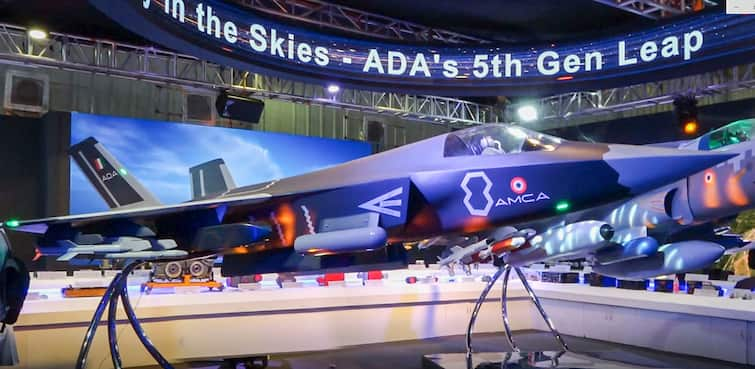Seven of India’s top defence companies have submitted bids to partner with the Defence Research and Development Organisation (DRDO) in designing and developing prototypes of the Advanced Medium Combat Aircraft (AMCA), the country’s ambitious fifth-generation stealth fighter project.
Two firms will eventually be shortlisted, sharing a ₹15,000 crore fund to build five AMCA prototypes to the highest standards before full-scale manufacturing rights are awarded.
Top Giants in the Race
Among the bidders are defence giants Hindustan Aeronautics Limited (HAL), Larsen & Toubro, Tata Advanced Systems Ltd, Adani Defence, and others. Some have tied up with partners—L&T has joined hands with Bharat Electronics Limited, while Bharat Earth Movers Limited has partnered with private players.
The evaluation process will be led by a committee chaired by former BrahMos Aerospace chief A. Sivathanu Pillai. The panel’s recommendations will be sent to the Defence Ministry, which will make the final call.
India’s ₹2 Lakh Crore Fighter Jet Dream
The AMCA project, valued at nearly ₹2 lakh crore, aims to produce at least 125 state-of-the-art fighter jets, roughly seven squadrons, for the Indian Air Force (IAF). If all goes as planned, the aircraft could enter service around 2034–35, positioning India alongside an exclusive club of nations with fifth-generation fighters.
Currently, only the United States (F-22, F-35), China (J-20), and Russia (Su-57) operate such advanced jets.
What Makes AMCA Special?
The AMCA will be a single-seat, twin-engine multirole jet, equipped with advanced stealth technology, internal weapons bays, and cutting-edge avionics comparable to global peers.
- Operational ceiling: 55,000 feet
- Weapons load: 1,500 kg internally + 5,500 kg externally
- Fuel capacity: up to 6,500 kg
- Variants: An initial version powered by the US-made GE F414 engine, followed by an advanced model with a fully indigenous engine currently in development.
Designed to be supermaneuverable, stealthy, and combat-ready across multiple roles, the AMCA represents a technological leap for India’s defence sector.
Why Fifth-Gen Fighters Matter
Unlike earlier aircraft, fifth-generation fighters rely heavily on stealth coatings, sensor fusion, advanced avionics, and network-centric warfare capabilities. Their superior battlefield software provides pilots with real-time awareness of threats and allies, ensuring a decisive edge in combat.
Push for Self-Reliance in Defence
The AMCA is part of India’s larger push to modernise its military and reduce dependence on foreign suppliers. Recent defence upgrades include:
- A ₹63,000 crore deal to procure 26 Rafale-M jets from Dassault Aviation, to be delivered by 2031.
- Expansion of indigenous naval assets—aircraft carriers, warships, submarines, and hypersonic missile tests.
- A fresh commitment by Defence Minister Rajnath Singh to secure $100 billion worth of domestic defence contracts by 2033.
The IAF’s Vision for the Future
Speaking at Aero Tech India 2025 in Delhi, Air Marshal Awadhesh Kumar Bharti, Deputy Chief of the Air Staff, underscored the importance of building a truly indigenous ecosystem.
He stressed that while 100% indigenisation may not happen instantly, achieving high levels of domestic capability is crucial in times of crisis: “In the end, you cannot depend on anyone else. Self-reliance is the only way forward.”
HAL is currently working with General Electric to produce GE-404 engines for the LCA Mk-1, while also preparing for larger orders such as 97 new LCA jets for the IAF. Bharti confirmed that both the LCA and the AMCA would form the backbone of India’s future air defence.
The AMCA project is more than just an aircraft—it is a statement of intent. If successful, it will not only transform India’s air power but also place the country firmly in the league of military-technology leaders.
The race is on. Which Indian companies will get the green light to bring this fifth-generation dream to life? The Defence Ministry’s decision could shape the future of India’s skies for decades.


)
